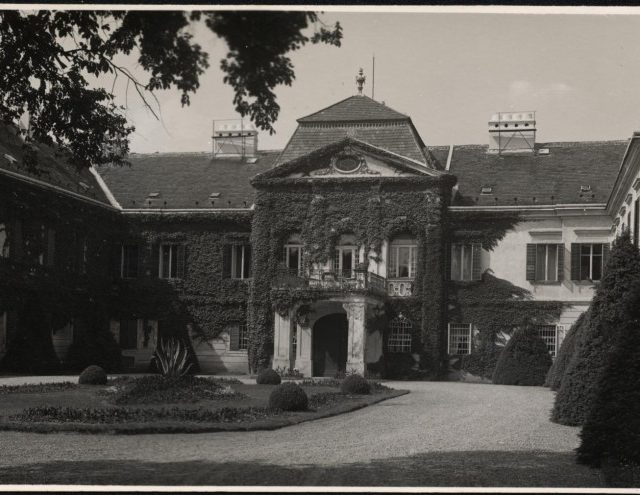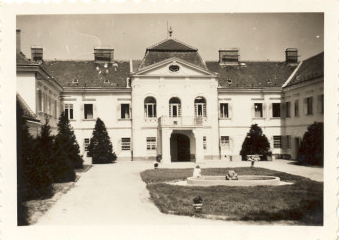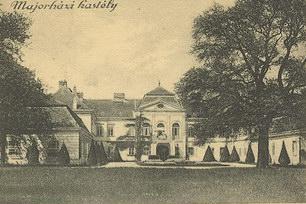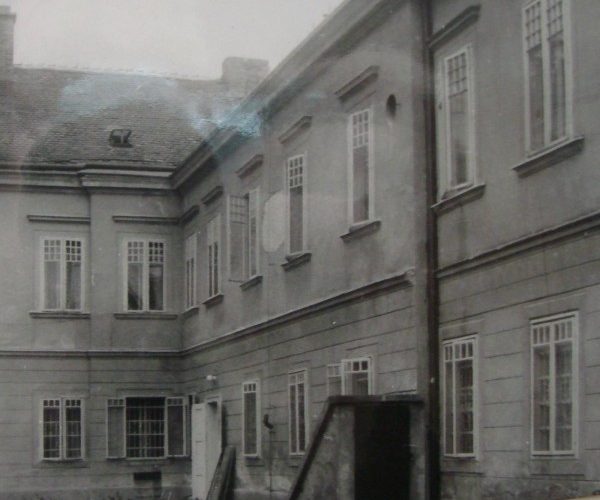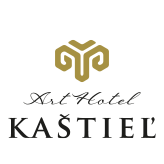Art Hotel Kaštieľ is not a typical hotel facility. It was created 250 years ago as a rural noble residence, which was built in the style of the classicizing Austrian Baroque in the years 1766-1769 by Baron Ján Jesenák on his previously purchased estate.
The three-winged manor house with an honorable courtyard stood on the edge of the village of Fél, today Tomášov, on a hill called Majorháza – Farm, rising in the middle of a fertile plain surrounded by a floodplain forest and the meandering riverbed of the Little Danube. A large landscaped park, which was created from a floodplain forest and still surrounds it today, became part of the manor house.
During the reconstruction of the historical building into hotel facilities, wall paintings of former manor salons were discovered under the layers of plaster. The most interesting of them was, as stated by the traveler Gottfried Rottenstein in his bedekri published in 1784, the graphic cabinet. Its walls were decorated with picture frames painted with an illusive technique, into which graphic sheets from Dutch painters were pasted.
Change of ownership
In the following years, the manor was owned by the noble families Draškóci, Vay and Strasser, who renovated the building in the spirit of fashionable styles. At the turn of the 19th and 20th centuries, on the initiative of Klementína Vayová, a chapel was added to the eastern wing of the manor house, which was restored and re-dedicated to the Guardian Angel during other adaptations of the manor house.
In 1908, the Strassers became the owners of the Tomášov manor and manor, who established a military hospital in the manor during the First World War. After the end of the tragic events of the war, the mansion burned down. Fortunately, the restoration of the ancient noble residence did not disturb its baroque appearance. On the contrary, she respected him and strengthened him even more. Modifications significantly affected only the interior, which was marked by Art Deco fashion and is still preserved today in the manor's arts and crafts equipment.
Nationalization of the mansion
After nationalization in 1948, the manor house became the property of the state and was used by the Social Welfare Commission. This established a correctional and educational institution for maladjusted youth in it. The mansion was modified for a new use that did not respect its historical development and internal layout. The ground-floor side wings of the mansion were purposefully extended by one floor, which created the necessary spaces for the establishment of classrooms and boarding rooms. Fortunately, the superstructure of the building was designed with sensitivity and organically merged with the historical building.
In 1991, the mansion was returned to the last owner, the Strassers, in accordance with the Restitution Act. In 2005, they sold it to new owners, who adapted the dilapidated historical building into high-standard hotel facilities and sensitively restored all its artistic, stylistic and aesthetic values, which had been devastated and disappeared over the years. They returned it to its former glory and unadulterated aristocratic luxury.
Guided tours of the mansion
You can learn more about the history of the manor house on one of the tours of the manor premises, including expert historical interpretation, which are held several times a year on various occasions. If you are interested in a guided tour outside of these dates, please contact us.

